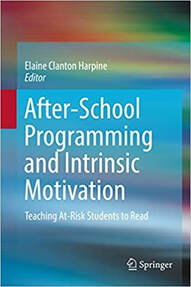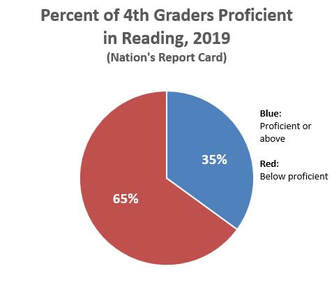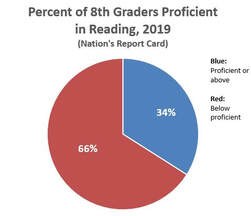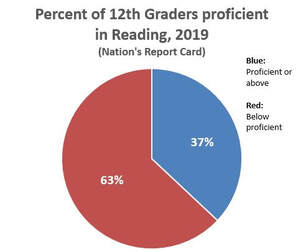
My response is--never.
Why is redoing a school year bad for students?
First, “redo” is just another word for retention. Redoing the school year is the same as saying that the child should be retained a grade in school.
Second, having children redo a year will cause the same problems that retention does. The Center for Development and Learning reviewed 40 years of research on the effectiveness of retention or having a student repeat a grade in school. Research proves that retention does not work. In their summary statement, the Center for Development and Learning stated the following problems:
- “Most children do not ‘catch up’ when held back.
- “Although some retained students do better at first, these children often fall behind again in later grades.
- “Retention is one of the most powerful predictors of high school dropout; holding a child back twice makes dropping out of school 90% certain.”
A third concern is the psychological damage that retention causes. Paula Johnson with the Intercultural Development Research Association wrote a full report on the effects of retention and stated that “… in-grade retention has numerous health and emotional risks for elementary school children…. Students who are retained in middle or high school also face higher risks of emotional distress, tobacco use, alcohol use, drug abuse, driving while drinking, early onset of sexual activity, suicidal intentions, and violent behaviors.”
Retention simply doesn’t work. Retention doesn’t help students learn.
Redoing a grade, even during a pandemic, will create the same problems and have the same results as retaining a student in the same grade during a normal year. Saying “redo” in place of “retention” does not change the harms that retention causes.
When children repeat a year, their education never recovers. Megan Andrew, a sociologist from the University of Notre Dame, conducted a study where she found that students who were retained a grade in between kindergarten and 5th grade were 60% less likely to graduate from high school than those who had similar grades but were not retained.
One of her study’s unique features is that she compared the students who were retained with the students who were also failing but not retained. She studied more than 37,000 students across the United States and matched students of similar family backgrounds, IQs, and cognitive skills.
Retention failed to help these students, and the list of problems created by retention goes on and on.
According to Grade Retention Facts, retaining a student does not help the student catch up in school. Unfortunately, redoing a grade may cause a student to do worse in school.
Grade Retention Facts also states that retained students consider grade retention as a more stressful event than the death of a parent
Grade Retention Facts is a concise, straightforward explanation, strongly supported by research evidence. It explains the myth—the common misinformation that you will hear—and the facts of what really happens from grade retention. In short, it says that grade retention is both academically ineffective (doesn’t work) and harmful to the student. I encourage you to sit down, read, and think about the true results of retention as highlighted on this handout.
So, why do we think that “redoing” a year after the pandemic will be any more successful than retention has been?
I have no idea, but the Internet is buzzing with both parents and schools demanding that students redo last year. Redo is just continuing the harmful retention process under a new disguise. It's called “redo,” but “redo” is actually still retaining a child a grade in school—a harmful substitution for when classroom education practices fail. I am also equally opposed to simply “socially promoting” students on to the next grade. Neither method works. Research has shown both methods to be total failures.
What should we do?
Many students have fallen behind during the coronavirus pandemic. Should these students be retained or required to “redo” the grade? No!
I've had the pleasure of working with a student since the coronavirus lockdown. This student was a full year behind, although the student had attended class every single day up till the lockdown. What happened? Ineffective teaching methods in the classroom. Did this student need to redo a year? No. I started right in with the next grade, and I retaught the curriculum using a totally different teaching method. Even with online teaching, this student was able to catch up and move ahead. This student is now “caught up” and at age level. No retention, no redo, just effective teaching using methods that have been proven to work. The method that I use is vowel clustering.
Reading education is central to making up lost ground
Researchers state that reading skills suffer the most when students are retained:
“The most notable academic deficit for retained students is in reading…. Students who are unprepared in reading have a 15% chance of succeeding in math and a 1% chance of succeeding in science, while students who are good readers have a 67% chance of succeeding in math and a 32% chance in science.”
Although reading is where children fall down the most when they miss a year, the problem is not just missed days in the classroom because of the pandemic. The real problem is the methods that we use to teach reading. Retention or redoing a grade will not correct poor teaching methods. Let's go back and look at reading scores before the pandemic. We were already in trouble in reading before Covid-19.
Keep in mind that all of these test scores were from classroom instruction before COVID-19. These scores reflect teaching methods used in classrooms before the coronavirus pandemic.
So, what should we do? Teach reading correctly, using a teaching method that actually works.
At my reading clinic, many of the children who I work with have been retained multiple times before they come to my clinic, some even three times. One 2nd grader who was sent to my reading clinic had been retained twice--once in kindergarten and a second time in first grade. Then, the student was “passed on” to second grade. The student was 9 years old and sent to my reading clinic in the middle of the year. The school was already saying that the student would most likely be retained again in 2nd grade. It's true the student couldn't read, not even at the pre- kindergarten level. Retaining the student twice, one-on-one tutoring in phonics, and balanced literacy in the classroom did not help the student learn to read—not even a little bit. Yet, four months after the student was enrolled at my reading clinic, the student began to read. Why was the student now able to read when everything else had failed? Because I use vowel clustering. Vowel Clustering has been proven to work with struggling, at-risk, and failing students where retention has failed.

I have had students move up three and four grade levels in reading in one year. How? I reteach. I start over from the very beginning, and I reteach students the vowel and consonant sounds and how to attach these sounds to their oral language system. No, reteaching is not the same as repeating a grade. I’m using a totally new and different teaching method. The method that I use is called Vowel Clustering.
Vowel Clustering Is Better than Whole Language and Phonics
Vowel Clustering Teaches Children to Build Words: Phonics Does Not
What Makes a Reading Program Successful?
It’s not the lack of hours spent in the classroom that is hurting most students this year. As the example from my reading clinic illustrates, a student spent 2 1/2 years in school (including one- on-one tutoring) and still could not read. Yet, in a mere four months at my reading clinic, with a totally different teaching approach, the child began to read.
Children don’t need to repeat a year. Instead, they need to have the material retaught in a different way.
Instead of having students redo a grade in school, we should adopt new teaching methods in the classroom. We need to get rid of phonics, whole language, and the so called “cueing” system. They've all been proven not to work.
What we need is to adopt teaching methods that do work. If we adopt teaching methods that are effective and actually teach children how to read, even children with learning challenges, we can help children overcome any lack of instruction during the pandemic.
The method that we use to teach reading in the classroom is the key to helping children learn and getting rid of reading failure. Don’t punish the children just because our classroom education is not working. Instead, help children learn and enjoy learning by switching to new teaching methods that can help all children learn to read.
If the Reading Wars Are Over, Why Did the Students Not Win?



 RSS Feed
RSS Feed
